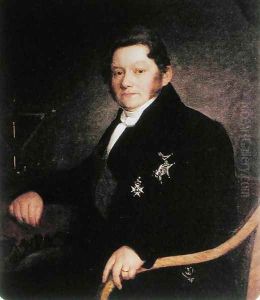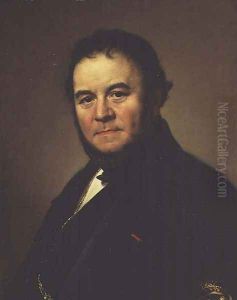Johan Olaf Sodermark Paintings
Johan Olaf Södermark was a Swedish artist and naval officer born on August 17, 1790, in Stockholm, Sweden. Not only was he recognized for his artistic talents, but he also had a career in the military, reflecting the dual nature of his professional life. Södermark's artistic journey began at a young age, and he honed his skills through diligent study and practice.
Södermark enrolled at the Royal Swedish Academy of Arts in Stockholm at the age of 15, where he studied art with a focus on painting. He displayed a natural aptitude for the arts and quickly developed his skills under the guidance of skilled instructors. During his time at the academy, he earned several awards for his work, which helped establish his reputation as a promising artist in the early 19th century Swedish art scene.
Parallel to his artistic endeavors, Södermark pursued a career in the Swedish Navy, where he served as an officer. His naval career often intersected with his artistic work, as he produced numerous drawings and paintings that reflected his experiences at sea. These works provided a unique perspective on naval life and contributed to the visual documentation of Sweden's maritime history.
Throughout his life, Södermark continued to produce artwork, including landscapes, portraits, and marine paintings. His style was influenced by the neoclassical ideals of the time, characterized by clarity, order, and balance. However, he also exhibited a certain romantic sensibility in his depictions of the natural world and the sea, which resonated with the broader romantic movement sweeping across Europe.
Johan Olaf Södermark's contributions to Swedish art were recognized during his lifetime, and his works were exhibited in various salons and galleries. His paintings captured the essence of the Swedish landscape and naval tradition, and they remain an integral part of Sweden's cultural heritage.
Södermark's legacy as an artist and naval officer continued to be celebrated after his death on March 12, 1848, in Stockholm. His body of work provides insight into the intersection of art and military life in early 19th century Sweden and continues to be studied and appreciated by art historians and enthusiasts alike.

